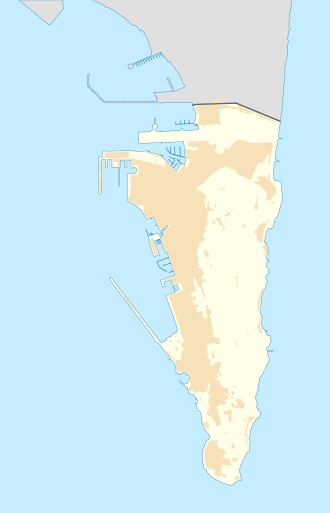| O'Hara's Tower | |
|---|---|
O'Hara's Folly | |
| Part of Fortifications of Gibraltar | |
| Upper Rock Nature Reserve, Gibraltar | |
 1865 Model of Gibraltar depicting O'Hara's Tower at top left. | |
| Site information | |
| Type | Watchtower |
| Location | |
Former location of O'Hara's Tower within Gibraltar | |
| Coordinates | 36°07′26″N5°20′34″W / 36.123845°N 5.342880°W |
| Site history | |
| Built | 1787–1791 |
| Materials | Stone, Iron |
| Demolished | 1888 |
O'Hara's Tower was a watchtower in the British Overseas Territory of Gibraltar. It was located at the highest point of the Rock of Gibraltar, at what is now O'Hara's Battery, near the southern end of the Upper Rock Nature Reserve.
Contents
Initially known as St. George's Tower, it was constructed in the late 18th century on the order of then Lieutenant Governor Charles O'Hara, under the presumption that it would be useful in observing the enemy at the port of Cádiz.
Not only was it unsuccessful; it was struck by lightning shortly after it was built, and remained in ruins for much of the 19th century until its demolition in 1888. Formerly referred to as St. George's Tower, it came to be known as O'Hara's Tower or, frequently, O'Hara's Folly. [1] [2]




